Why Planes Flyor Dont! There are lots of ways that things can fly They can be lighter than air, like a party balloon, and float on the breeze. They can be picked up by the wind, like a kite, or a spider, or a dandelion seed. They can rise on a jet of hot air or gas, like a rocket. They can flap their wings, like hummingbird sand bees. They can be pushed or pulled by an engine, like a jumbo jet. Or they can glide on wide-spread wings, like sailplanes, eagles, and paper airplanes.
But what do we mean when we talk about flying? To be flying, an object has to stay in the air and not fall down. Some people might tell you that the best paper airplane, the one that goes farthest of all, is a tight wad of paper. But that isnt flying. The wad is falling from the moment it leaves your hand. To be flying, it has to keep going steadily, and not slowdown or dive to the ground. Paper airplanes cant stay up forever, but they can glide a long way, down a long straight line, before hitting the ground.
This section will tell you how those wings of paper really fly. 
Animals that Fly Only four kinds of animals have ever learned how to truly fly: insects, birds, bats, and pterosaurs. Insects are the oldest fliers. They have been flitting about for 300 million years or more. They flap specialized wings to get around. Pterosaurs, birds, and bats all turned their arms and hands into wings, and used flaps of skin or grew feathers to give them the big, wide shape they need to create lift.
We humans cant fly because our arms and hands are best suited for holding tools, not grabbing the air! Pterosaurs were like flying dinosaurs, and they are extinct now. Thats probably a good thing, because the biggest ones were as big as a Cessna airplane! Some people think pterosaurs survived until quite recently, and thats what legendary dragons really were. What do you think? There are many other animals that can glide or parachute, like flying fish and flying squirrels, but they cant take off from the ground and they cant sustain themselves in the air. But they use fins, feet, stretched skin, or flattened bodies to create enough lift to slow their fall and travel forward. Some flying fish are such good gliders that they can skim more than 300 yards over the waves! 




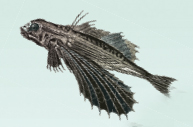 know what? Not everything with wings can glide. Only three kinds of insects can stay in the air without moving their wings.
know what? Not everything with wings can glide. Only three kinds of insects can stay in the air without moving their wings.
Which ones? Butterflies, dragonflies, and locusts. Thats why butterflies can migrate thousands of miles. They can rest their wings while they glide. All the other insects have to flap frantically all the time. Whew! 
Creating Lift Lift is what holds flying things up. In an airplane, lift is made by the wing moving through the air.
How? Lets find out! PUSHING ALL THE TIME Did you know that air is pushing on us all the time? Still air pushes from every direction equally. (Our bodies push back the same amount, which is why we dont feel it.) We can feel wind, because thats moving air, which hits only one side of us and feels like a bigger push.  A shape that is curved on top and flat on the bottom is ideal for a wing profile. It will create lift when air flows over it, because the air flows faster over the top, reducing the pressure pushing down on that surface. The greater pressure pushing on the bottom lifts it up. This kind of cambered (curved) shape is called an airfoil.
A shape that is curved on top and flat on the bottom is ideal for a wing profile. It will create lift when air flows over it, because the air flows faster over the top, reducing the pressure pushing down on that surface. The greater pressure pushing on the bottom lifts it up. This kind of cambered (curved) shape is called an airfoil.
Why does the air on the top of the wing speed up? And why does that lower the air pressure there? Its because of three special effects: the Coanda Effect , the Kutta Condition , and Bernoullis Principle .  Bernoullis Principle says that the faster a fluid flows, the less pressure it exerts. So if the air on the top of the wing is going faster, theres less pressure pushing down. That means the higher pressure on the bottom of the wing pushes it up. And lift ensues!
Bernoullis Principle says that the faster a fluid flows, the less pressure it exerts. So if the air on the top of the wing is going faster, theres less pressure pushing down. That means the higher pressure on the bottom of the wing pushes it up. And lift ensues!  The Coanda Effect says that fluids (like air and water) tend to stay attached to surfaces they flow over. This means that air follows the curve at the top of the wing.
The Coanda Effect says that fluids (like air and water) tend to stay attached to surfaces they flow over. This means that air follows the curve at the top of the wing.
And because of the Kutta Condition , created by the sharp back edge of the airfoil, the air speeds up as it flows over the curve. It speeds up so much that it gets to the back of the wing faster than the air going under it! KITES Think about kites. They are a wing that stays in one place while wind moves over them. The wind wants to go in a straight line, so when a kite is in the way, the wind tries to push it aside, making it rise. This creates a lot of drag, too, which pushes the kite backwards at the same time. Without a string to hold it still, the kite would not be able to keep air moving over it.
This is why airplanes based on kites (and there were a lot of them at first!) usually failed. 
 Paper experiment TRY IT! Here are two experiments you can try. First, blow over the top of a drooping sheet of paper. The paper will rise up and stand out straight, supported by the greater air pressure under it. Next, try touching a steady flow of tap water with the bottom of a spoon. Youd expect the spoon to be pushed away, but in fact it is pulled into the flow.
Paper experiment TRY IT! Here are two experiments you can try. First, blow over the top of a drooping sheet of paper. The paper will rise up and stand out straight, supported by the greater air pressure under it. Next, try touching a steady flow of tap water with the bottom of a spoon. Youd expect the spoon to be pushed away, but in fact it is pulled into the flow.
Thats because the speed of the water reduces the pressure on the bottom of the spoon, and air on the other side pushes it. 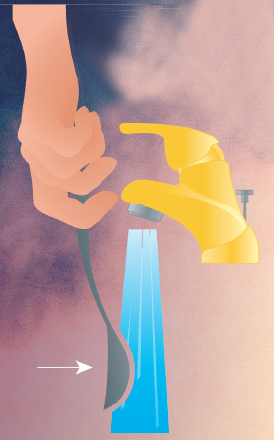 Spoon experiment
Spoon experiment  know what? The Wright brothers are famous for being the first to fly a powered airplane. But they had trouble at first. Their wings didnt work! They put test models on their bicycles and rode around, and then made a little wind tunnel to test more models. But they didnt know that small wings are different from big ones. The models that worked best were almost flat, but when they were turned into full-sized wings, they were too thin and hardly made any lift! Making lift sounds simple, and it basically is.
know what? The Wright brothers are famous for being the first to fly a powered airplane. But they had trouble at first. Their wings didnt work! They put test models on their bicycles and rode around, and then made a little wind tunnel to test more models. But they didnt know that small wings are different from big ones. The models that worked best were almost flat, but when they were turned into full-sized wings, they were too thin and hardly made any lift! Making lift sounds simple, and it basically is.







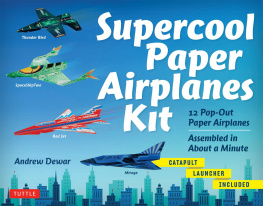







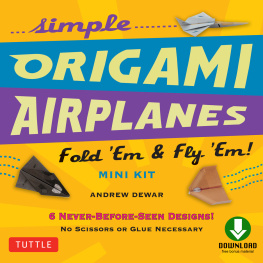

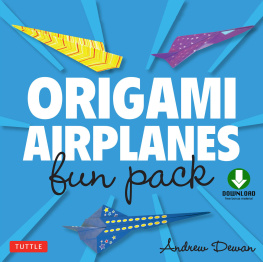






 know what? Not everything with wings can glide. Only three kinds of insects can stay in the air without moving their wings.
know what? Not everything with wings can glide. Only three kinds of insects can stay in the air without moving their wings.
 A shape that is curved on top and flat on the bottom is ideal for a wing profile. It will create lift when air flows over it, because the air flows faster over the top, reducing the pressure pushing down on that surface. The greater pressure pushing on the bottom lifts it up. This kind of cambered (curved) shape is called an airfoil.
A shape that is curved on top and flat on the bottom is ideal for a wing profile. It will create lift when air flows over it, because the air flows faster over the top, reducing the pressure pushing down on that surface. The greater pressure pushing on the bottom lifts it up. This kind of cambered (curved) shape is called an airfoil. Bernoullis Principle says that the faster a fluid flows, the less pressure it exerts. So if the air on the top of the wing is going faster, theres less pressure pushing down. That means the higher pressure on the bottom of the wing pushes it up. And lift ensues!
Bernoullis Principle says that the faster a fluid flows, the less pressure it exerts. So if the air on the top of the wing is going faster, theres less pressure pushing down. That means the higher pressure on the bottom of the wing pushes it up. And lift ensues!  The Coanda Effect says that fluids (like air and water) tend to stay attached to surfaces they flow over. This means that air follows the curve at the top of the wing.
The Coanda Effect says that fluids (like air and water) tend to stay attached to surfaces they flow over. This means that air follows the curve at the top of the wing.
 Paper experiment TRY IT! Here are two experiments you can try. First, blow over the top of a drooping sheet of paper. The paper will rise up and stand out straight, supported by the greater air pressure under it. Next, try touching a steady flow of tap water with the bottom of a spoon. Youd expect the spoon to be pushed away, but in fact it is pulled into the flow.
Paper experiment TRY IT! Here are two experiments you can try. First, blow over the top of a drooping sheet of paper. The paper will rise up and stand out straight, supported by the greater air pressure under it. Next, try touching a steady flow of tap water with the bottom of a spoon. Youd expect the spoon to be pushed away, but in fact it is pulled into the flow. Spoon experiment
Spoon experiment  know what? The Wright brothers are famous for being the first to fly a powered airplane. But they had trouble at first. Their wings didnt work! They put test models on their bicycles and rode around, and then made a little wind tunnel to test more models. But they didnt know that small wings are different from big ones. The models that worked best were almost flat, but when they were turned into full-sized wings, they were too thin and hardly made any lift! Making lift sounds simple, and it basically is.
know what? The Wright brothers are famous for being the first to fly a powered airplane. But they had trouble at first. Their wings didnt work! They put test models on their bicycles and rode around, and then made a little wind tunnel to test more models. But they didnt know that small wings are different from big ones. The models that worked best were almost flat, but when they were turned into full-sized wings, they were too thin and hardly made any lift! Making lift sounds simple, and it basically is.